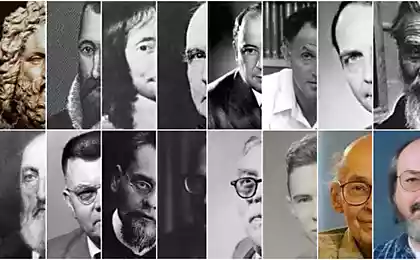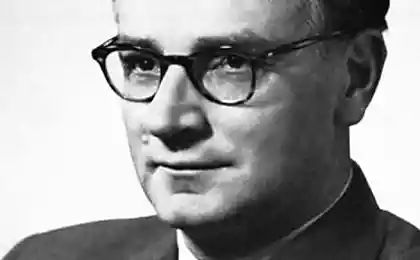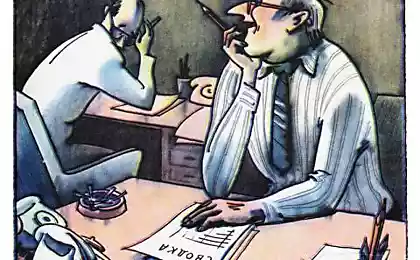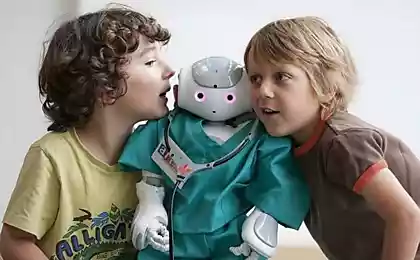1435
Women who have influenced the development of information technology
The world of information technology is filled with many wonderful designers, inventors, researchers and prominent figures. And most of them - are men. Even among women there were many talented scientists who have made an invaluable contribution to the IT industry. The post will talk about the fair sex, who have achieved success in the exact sciences. Namely: Karen Jones, Erna Hoover, Judy Malloy, radium Perlman, Evelyn Boyd Granville, Hedy Lamarr and Sophie Wilson. On par with other, these women have influenced the history of the development of information technology.
Karen Spark Dzhons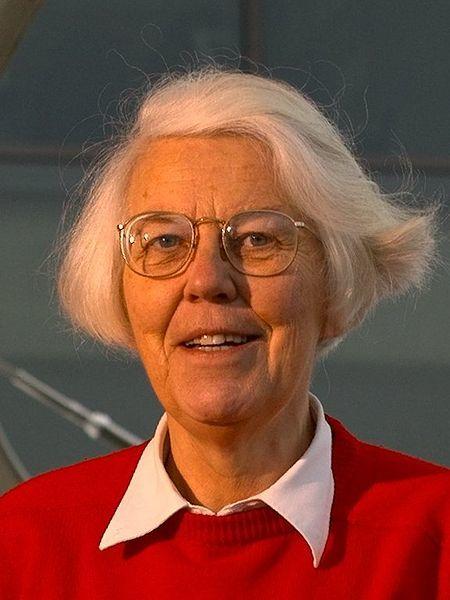
Spark Karen Jones (Karen Spärck Jones) - British scientist in the field of computer science. It has developed technologies that allow users to work with a computer using ordinary words, and not through the equation and code. This breakthrough was of great importance for the further development of search engines.
Karen was born August 26, 1935 in the town of Huddersfield, Yorkshire (England). His father, Owen Jones, was a professor of chemistry. His mother, Ida Spark Norwegian, moved to the UK after the Second World War.
Spark Jones was in high school Huddersfield, and then went on Girton College (Girton College) at Cambridge. From 1953 to 1956 she studied history and philosophy. After graduating from university Jones for some time he worked as a teacher at the school, then got into the field of computer science.
Karen Jones Spark:
My slogan: "Computer Science is too important to be left only to men." I think that women bring diversity to the process of development and open new perspectives. They are more thoughtful and do not seek the pattern correct technical errors. I believe that the computer - very interesting science. You're trying to create something that has not suschestvuet.Spark Jones worked in the linguistic research department at Cambridge University since the late 50s. Her work focuses on the use of a thesaurus for information processing and speech. Certain words with their synonyms transferred to punched cards, and then developed more sophisticated ways of distinguishing Disambiguation. One example of a "farmer processes the field" has shown that the word "field" can have many meanings. But if you add as a target value of a common basic concept which would address all the words (eg - "agriculture" includes "farmer" and "process" and "Field"), the program will choose the word "earth»
<. br>
Spark Jones wrote a thesis on the subject "Synonymy and semantic classification" in 1964. This work is much ahead of its time and was published only twenty years later, in an article on the topic of artificial intelligence at Edinburgh University. In fact - it was the first application of statistical methods for clustering lexical data
. In 1974, Spark Jones moved to the University of Cambridge computer laboratory. And until 2002, he served as a professor of computer science. In the last years of her life she was engaged in the integration of these areas into the basic block diagram of artificial intelligence. One of its most important contributions was the concept of accounting weight inverse document frequency words (IDF: inverse document frequency), which it presented in an article in 1972. Today the IDF is used in many search engines, usually as part of the scheme TF-IDF.
Spark Jones was a member of the British Academy (Vice-President in 2000-2002.), AAAI (for the development of Artificial Intelligence Association), ECCAI (European Association for Artificial Intelligence), has been president of the Association for Computational Linguistics in 1994.
< br> Karen Jones Spark died on April 4, 2007 in the city of Willingham Cambridgeshire.
Erna Schneider Guver
Erna Schneider Hoover (Erna Schneider Hoover) - American mathematician, inventor of the computer switching method calls
. Erna Hoover was born June 19, 1926 in Igvingtone (NJ, USA). The family lived in South Orange, his father was a dentist and his mother - a teacher. Erna since childhood interest in science. At a young age she read a biography of Maria Sklodowska-Curie and the example of this outstanding woman realized that with a strong desire can succeed in science. Even though the prevailing view at that time the role of women.
Hoover attended Wellesley College (Wellesley College), where she studied classical and medieval philosophy, and history. In 1948 she graduated with distinction and received a bachelor's degree. And in 1951, Erna received a doctorate from Yale University (Yale University) in the field of philosophy and the foundations of mathematics.
Hoover was a professor at Swarthmore College (Swarthmore College) from 1951 to 1954, she taught philosophy and logic. During married Charles Wilson Hoover (Charles Wilson Hoover), who later was very supportive of his wife's career aspirations.
In 1954, Hoover was invited to work in the laboratory of Bell Labs. internal training program was the equivalent of a master's degree in computer science. Switching the system goes from electronic to computer-based technologies. But when in a short period of time the number of calls reached peak and call centers found themselves literally "littered with" calls, the whole system freezes.
Hoover has used his knowledge of symbolic logic and feedback theory for programming call center management device to use the data of incoming calls to restore order in the whole system. She has used computer electronic method for monitoring the frequency of incoming calls at different times. With its help it was possible to set priorities according to the method, preference was given to the processes that touch switch input and output. Processes such as accounting and billing, carried out in the second turn. As a result, the computer will automatically adjust the speed of the call receiving call center, significantly reducing the likelihood of overload.
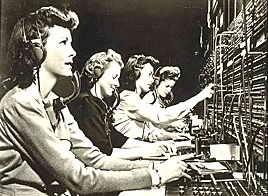
Erna Schneider Hoover:
In my opinion - it was a sensible decision. I developed an executive program to deal with situations in which the number of calls exceeds the norm. The method could optimize the process and to protect the system from the exit of stroya.Dlya her invention called «Feedback Control Monitor for Stored Program Data Processing System» (monitoring feedback control for the data process system according to the recorded program), Hoover issued the patent number 3, 623, 007 in November 1971. It was one of the first ever issued by software patents.
Thanks to the invention, Hoover became the first female head of the technical department of Bell Labs. She led the operations support department in 1987. The principles of the invention, it is still used in telecommunications equipment. In the future, Hoover has worked on various high-level tasks. It is engaged in research programs radar center Safeguard Anti-Ballistic Missile System - a missile defense system to intercept ballistic missile warheads. Her department was working on methods used in the creation of artificial intelligence, as well as on the development of large databases and software.
Hoover worked at Bell Labs 32 years old, until his retirement in 1987. In addition, she served on the boards of institutions of higher education in New Jersey. This amazing woman scientist made in the national hall of fame of inventors in 2008.
Judy Malloy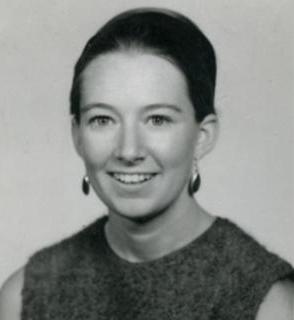
Judith Ann Powers, known as Judy Malloy (Judy Malloy) - writer and self-taught programmer, invented its own database system for his novels
. Judy was born on January 9, 1942 in Boston. Her childhood was spent in Massachusetts. Judy's mother was a journalist and editor of the newspaper, and his father - worked as an assistant district attorney in the two districts of the state of Massachusetts, then was chief assistant state attorney. Malloy since childhood felt the call to the fine arts and began studying painting and drawing.
After graduating from Middlebury College (Middlebury College) with a degree in literature, Malloy took a job at the Library of Congress (Library of Congress). After that she moved to the position of technical information specialist in the Ball Brothers Research Corporation, a contractor for NASA. Malloy ran their technical library and studied the FORTRAN programming language in order to determine the relevant content for the study.
In the early '70s Malloy moved to the East Bay. There she developed a series of art books with inconsistent stories, actuated by the words and pictures.
In 1986, Judy wrote and programmed pioneering hypertext story «Uncle Roger» ( «Uncle Roger") - the first online giperliteratury project with links that change the story depending on the reader's choice
. Judy Malloy:
This was my first experience in database programming. The idea on which I have worked since 1976, was to use molecular units to create incoherent story. "Uncle Roger" contains three parts hypertext «narrabase» (narrative database), using a keyword search.
Radia Joy Perlman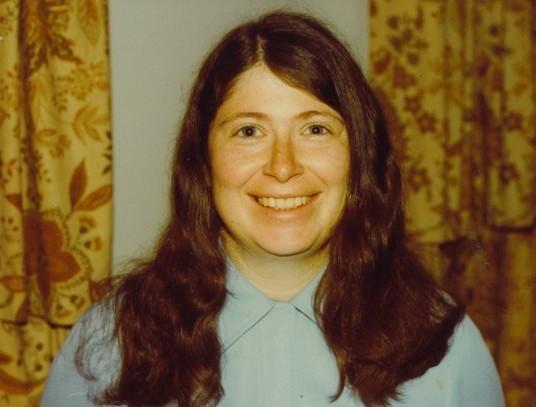
Radia Joy Perlman (Radia Joy Perlman) - a software developer, network engineer. She invented the Spanning Tree Protocol (STP), which was fundamental to the operation of network bridges.
Radia was born January 1, 1951 in Portsmouth (Virginia, USA). My parents worked for the US government: his father worked as an engineer on the radar, and his mother - a programmer.
In an interview for «The Atlantic»:
At school I always liked puzzles, lessons in mathematics and science. These subjects seemed so easy and exciting. However, I did not meet the stereotype of the "engineer". I never looked into things for parts or developing computer from spare parts. Besides, I was always interested in art - loved classical music, played the piano and French horn, wrote essays, poems. A program being learned only a sophomore, while visiting fiziki.Buduchi grade student at MIT (Massachusetts Institute of Technology) Perlman participated in the program Undergraduate Research Opportunities Program, within the Lab LOGO in the Artificial Intelligence Laboratory at MIT. It has developed a version of the children's educational robotics language LOGO, called TORTIS. The study, conducted in the years 1974-1976, young children (the youngest age was 3, 5 years), programmed educational robot, known as the Turtle (turtle). Radium is considered a pioneer in the field of teaching young children computer programming.
Perlman received a bachelor's degree, master's at MIT and a PhD in Computer Science (1988). Her doctoral dissertation examined the issue of routing in the presence of a network of malicious damage.
Most Perlman is known for his invention of the channel protocol STP. Its main task - to eliminate loops in any Ethernet network topology, consisting of one or more network bridges. STP automatically blocks the connection, which at the moment for full connectivity switches are redundant.
Among other contributions was the invention of network concepts that create a certain type of routing protocol, bore the name «link state routing». The protocol created for it of DECnet, was approved by the International Organization for Standardization and renamed the IS-IS, and is the preferred routing protocol in most modern Internet providers.
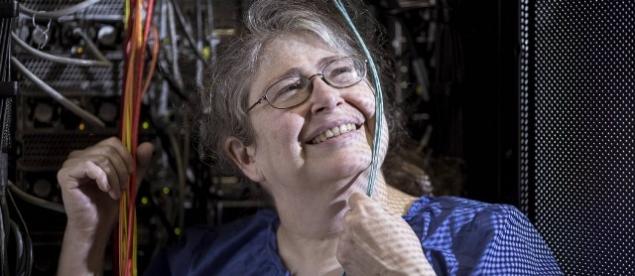
Perlman also working on standardization of TRILL ( «Transparent Interconnection of Lots of Links»), allowing to carry out packet forwarding Intrenet using IS-IS instead of spanning tree. She performed important work in the field of security.
In his spare time, inventions and poetry, Pearlman writes books. At first glance it may seem that this is a very "dry" literature. Especially if you judge by the names of "interconnection: bridges, routers, switches and data transmission protocols" and "Network Security: personal communication in the public world." But the author says that this is not a purely technical books and in fact they have a sense of humor. Perlman is the author of a textbook on the network connection and co-author of a textbook on network security. She has more than 100 issued patents.
Perelman is often credited with the title of "Mother of the Internet". But that's what it says in this regard:
I did not invent the Internet. And it is a title, which is not possible to obtain the same way as, for example, the extent of the doctor. I do not think that the emergence of the World Wide Web - the merit of any one person. In its creation was attended by many lyudi.Evelin Boyd Granvil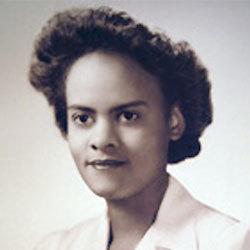
Evelyn Boyd Granville (Evelyn Boyd Granville) - one of the first African-American, received his doctorate in mathematics.
Evelyn Boyd was born on May 1, 1924 in Washington. Her father worked as a laborer and his mother separated when Boyd was a little girl. Boyd raised by his mother and aunt, who worked in the Bureau of Engraving and Printing. With the financial support of her aunt, and later a small scholarship from Phi Delta Kappa, in 1941 she entered Smith College (Smith College). Her specialty was mathematics and physics. But Evelyn was also interested in astronomy. Organization of student support Smith College (Smith Student Aid Society of Smith College) gave Evelyn a scholarship, with which she went to Yale. There she studied under the direction of functional analysis Einar Hill until 1949 year.
In 1950 she took the position of a teacher in the University Fisk (Fisk University). But two years later he left the scientific community and returned to Washington in Diamond Ordnance Fuze Laboratories. There she worked for four years, and then moved to the position at the IBM computer programmer.
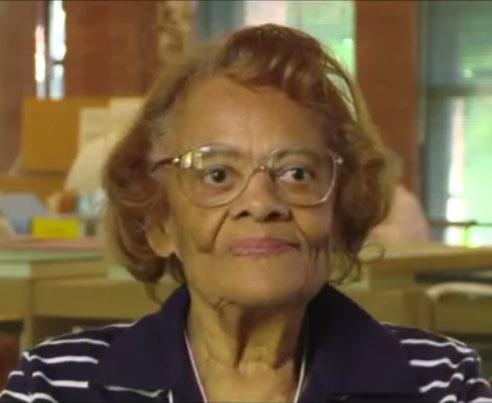
«I always smile when I hear that women can not be successful in mathematics»
Boyd was married to the Rev. Gamaliel Mansfield Collins (Reverend Gamaliel Mansfield Collins) in 1960 (divorced in 1967), and with it moved to Los Angeles where she worked in the Laboratory of the US space technology (U.S. Space Technology Laboratories). In 1962 he got into the space organization of North American Aviation Space and Information Systems Division. There, she worked on various projects Apollo program, including the calculation of the trajectory worked and developed the "digital computer methods».
Due rkonstruktsi IBM, Boyd was forced to change jobs. In 1967 she was appointed professor of mathematics at the University of California (California State University). From 1984 to 1988 she taught at the University of Texas (Texas College), where she created a mathematical enrichment program for elementary school.
Hedi Lamarr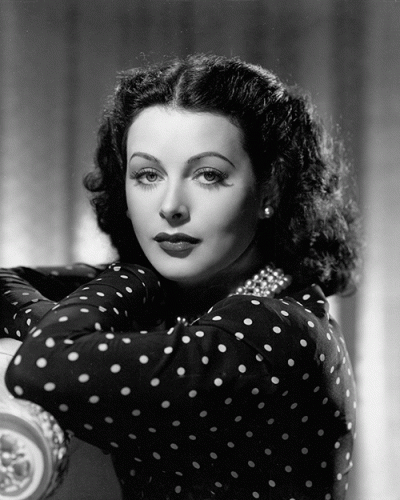
Hedwig Eva Maria Kiesler (Hedwig Eva Maria Kiesle), known as Hedy Lamarr - Austrian and later American actress and inventor
. Hedy Lamarr was born on November 9, 1914 in Vienna (Austria). Her father was a banker (originally from Lemberg), and his mother was a pianist (a native of Budapest). Hedy at age 16 left home to go to drama school and in the movies. Debut, was the role in the German film "The Girl in the night club" (1930). During his career in Hollywood actress he has played in more than 55 films. And no one could have predicted that at the peak of his film career woman will suddenly inventions, without any scientific or technical education.
The first impetus for this was the message of an evacuation ship sunk 17 August 1940. As a result, killing 77 children. Then Lamarr decided to contribute to the development of military technology, and has designed a system of noise-proof radio control for torpedoes. And all this on the basis of piano four hands.
Hedi supposed to send part of the signal on the same frequency, and then move to the other to transfer the following portion of the signal. In agreeing a transmitter and a receiver in relation to frequency hopping, it turned out to something like four games in hand, and the signal can become resistant to interference to jam. Lamarr also suggested that the mechanical coordination of the transmitter with the receiver could occur through the details, like a mechanical piano roll. Cushion with pins and driven timepiece looks compact enough to fit in a marine torpedo casing. In addition, according to Hedi, the system can use a set of 88 radio frequencies - according to the number of piano keys
. From conversations collaborators invention was born a special data transmission system, called a pseudo-random frequency hopping work (Frequency Hopping Spread Spectrum). This technology provided the US Navy. But to realize it was possible only in 1962, during the Cuban missile crisis.
The patent was the basis for modern technologies spread spectrum communications such as CDMA, Wi-Fi and Bluetooth technology. The most famous example of the use of Hedy Lamarr invention today is a GSM radio communication standard.

Последние годы своей жизни бывшая звезда провела, занимаясь бесконечным судебным разбирательства в связи с несанкционированным использованием своего имени. Так, в 1998 году портрет актрисы стал символом программы векторной графики Corel Draw, после чего Хеди подала исковое заявление на корпорацию Corel. Однако суд признал за компанией право использовать изображение Ламарр.
Софи Уилсон
Софи Уилсон (Sophie Wilson) — британская изобретательница, разработчик одних из самых первых коммерчески успешных персональных компьютеров, создатель ARM-процессора.
Уилсон родилась в 1957 году в городе Лидс (Йоркшир, Англия). Она изучала информатику в Кембриджском университете (University of Cambridge). Воодушевленная ранним MK14, разработала микрокомпьютер с 6502 процессором (8-разрядный процессор с 16-разрядной шиной адреса, позволяющей адрес до 64 килобайт оперативной памяти).
В 1978 году, Уилсон присоединилась к Acorn Computers Ltd, где занималась разработкой различных компьютерных устройств. Созданную ею модель использовалась Крисом Карри (Chris Curry) и Германом Хаузером (Hermann Hauser) в разработке Acorn Micro-Computer.
В начале 80-х Уилсон расширила язык программирования BASIC домашнего компьютера Acorn Atom в улучшенную версию для Acorn Proton. Этот микрокомпьютер поспособствовал заключению контракта между Acorn и British Broadcasting Corporation (BBC). Менее чем за неделю Уилсон разработала разработала систему, включая плату и компоненты и программное обеспечение. Proton стал BBC Micro и его BASIC превратилась в BBC BASIC. Софи написала руководство и технические спецификации, понимая, что коммуникация была важной частью успеха.
В 1983 году, Уилсон начала создавать набор инструкций для первых RISC процессоров (Reduced instruction set computing), Acorn RISC Machine (ARM). Отличительными особенностями были: гораздо меньшее число транзисторов, чем в микропроцессоров Intel того времени, и отсутствие микрокода — уровня, на котором машинные коды преобразовывались в более простые микроинструкции. Благодаря этой упрощенной архитектуре микропроцессоры ARM не только обладали более высоким быстродействием, но и потребляли гораздо меньше электроэнергии, чем конкурентные.
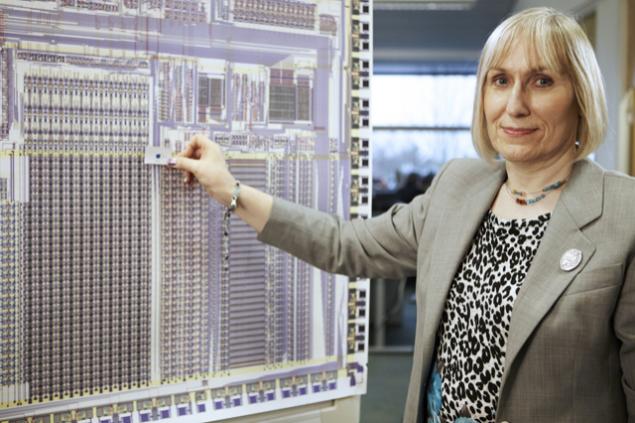
Уилсон разработала Acorn Replay, видео архитектор для машин Acorn — расширение операционной системы для доступа к видео, оптимизированное для работы высокой частоты кадров на ARM центральных процессорах с ARM 2 и дальше.
Она была членом правления компании технологии и игр Eidos plc, а также была консультантом ARM Ltd (после ее отделения от Acorn в 1990 году). В 1999 году, после распада Acorn Computers, Софи Уилсон основала компанию Element 14 в которой разработала процессор FirePath. На сегдняшний день он используется в оборудовании широкополосных сетей и телеприставки. В 2001 году Element 14 была продана компании Broadcom за 450 млн долларов.
Источник: geektimes.ru/company/ua-hosting/blog/278152/
Karen Spark Dzhons

Spark Karen Jones (Karen Spärck Jones) - British scientist in the field of computer science. It has developed technologies that allow users to work with a computer using ordinary words, and not through the equation and code. This breakthrough was of great importance for the further development of search engines.
Karen was born August 26, 1935 in the town of Huddersfield, Yorkshire (England). His father, Owen Jones, was a professor of chemistry. His mother, Ida Spark Norwegian, moved to the UK after the Second World War.
Spark Jones was in high school Huddersfield, and then went on Girton College (Girton College) at Cambridge. From 1953 to 1956 she studied history and philosophy. After graduating from university Jones for some time he worked as a teacher at the school, then got into the field of computer science.
Karen Jones Spark:
My slogan: "Computer Science is too important to be left only to men." I think that women bring diversity to the process of development and open new perspectives. They are more thoughtful and do not seek the pattern correct technical errors. I believe that the computer - very interesting science. You're trying to create something that has not suschestvuet.Spark Jones worked in the linguistic research department at Cambridge University since the late 50s. Her work focuses on the use of a thesaurus for information processing and speech. Certain words with their synonyms transferred to punched cards, and then developed more sophisticated ways of distinguishing Disambiguation. One example of a "farmer processes the field" has shown that the word "field" can have many meanings. But if you add as a target value of a common basic concept which would address all the words (eg - "agriculture" includes "farmer" and "process" and "Field"), the program will choose the word "earth»
<. br>

Spark Jones wrote a thesis on the subject "Synonymy and semantic classification" in 1964. This work is much ahead of its time and was published only twenty years later, in an article on the topic of artificial intelligence at Edinburgh University. In fact - it was the first application of statistical methods for clustering lexical data
. In 1974, Spark Jones moved to the University of Cambridge computer laboratory. And until 2002, he served as a professor of computer science. In the last years of her life she was engaged in the integration of these areas into the basic block diagram of artificial intelligence. One of its most important contributions was the concept of accounting weight inverse document frequency words (IDF: inverse document frequency), which it presented in an article in 1972. Today the IDF is used in many search engines, usually as part of the scheme TF-IDF.
Spark Jones was a member of the British Academy (Vice-President in 2000-2002.), AAAI (for the development of Artificial Intelligence Association), ECCAI (European Association for Artificial Intelligence), has been president of the Association for Computational Linguistics in 1994.
< br> Karen Jones Spark died on April 4, 2007 in the city of Willingham Cambridgeshire.
Erna Schneider Guver

Erna Schneider Hoover (Erna Schneider Hoover) - American mathematician, inventor of the computer switching method calls
. Erna Hoover was born June 19, 1926 in Igvingtone (NJ, USA). The family lived in South Orange, his father was a dentist and his mother - a teacher. Erna since childhood interest in science. At a young age she read a biography of Maria Sklodowska-Curie and the example of this outstanding woman realized that with a strong desire can succeed in science. Even though the prevailing view at that time the role of women.
Hoover attended Wellesley College (Wellesley College), where she studied classical and medieval philosophy, and history. In 1948 she graduated with distinction and received a bachelor's degree. And in 1951, Erna received a doctorate from Yale University (Yale University) in the field of philosophy and the foundations of mathematics.
Hoover was a professor at Swarthmore College (Swarthmore College) from 1951 to 1954, she taught philosophy and logic. During married Charles Wilson Hoover (Charles Wilson Hoover), who later was very supportive of his wife's career aspirations.
In 1954, Hoover was invited to work in the laboratory of Bell Labs. internal training program was the equivalent of a master's degree in computer science. Switching the system goes from electronic to computer-based technologies. But when in a short period of time the number of calls reached peak and call centers found themselves literally "littered with" calls, the whole system freezes.
Hoover has used his knowledge of symbolic logic and feedback theory for programming call center management device to use the data of incoming calls to restore order in the whole system. She has used computer electronic method for monitoring the frequency of incoming calls at different times. With its help it was possible to set priorities according to the method, preference was given to the processes that touch switch input and output. Processes such as accounting and billing, carried out in the second turn. As a result, the computer will automatically adjust the speed of the call receiving call center, significantly reducing the likelihood of overload.

Erna Schneider Hoover:
In my opinion - it was a sensible decision. I developed an executive program to deal with situations in which the number of calls exceeds the norm. The method could optimize the process and to protect the system from the exit of stroya.Dlya her invention called «Feedback Control Monitor for Stored Program Data Processing System» (monitoring feedback control for the data process system according to the recorded program), Hoover issued the patent number 3, 623, 007 in November 1971. It was one of the first ever issued by software patents.
Thanks to the invention, Hoover became the first female head of the technical department of Bell Labs. She led the operations support department in 1987. The principles of the invention, it is still used in telecommunications equipment. In the future, Hoover has worked on various high-level tasks. It is engaged in research programs radar center Safeguard Anti-Ballistic Missile System - a missile defense system to intercept ballistic missile warheads. Her department was working on methods used in the creation of artificial intelligence, as well as on the development of large databases and software.
Hoover worked at Bell Labs 32 years old, until his retirement in 1987. In addition, she served on the boards of institutions of higher education in New Jersey. This amazing woman scientist made in the national hall of fame of inventors in 2008.
Judy Malloy

Judith Ann Powers, known as Judy Malloy (Judy Malloy) - writer and self-taught programmer, invented its own database system for his novels
. Judy was born on January 9, 1942 in Boston. Her childhood was spent in Massachusetts. Judy's mother was a journalist and editor of the newspaper, and his father - worked as an assistant district attorney in the two districts of the state of Massachusetts, then was chief assistant state attorney. Malloy since childhood felt the call to the fine arts and began studying painting and drawing.
After graduating from Middlebury College (Middlebury College) with a degree in literature, Malloy took a job at the Library of Congress (Library of Congress). After that she moved to the position of technical information specialist in the Ball Brothers Research Corporation, a contractor for NASA. Malloy ran their technical library and studied the FORTRAN programming language in order to determine the relevant content for the study.
In the early '70s Malloy moved to the East Bay. There she developed a series of art books with inconsistent stories, actuated by the words and pictures.
In 1986, Judy wrote and programmed pioneering hypertext story «Uncle Roger» ( «Uncle Roger") - the first online giperliteratury project with links that change the story depending on the reader's choice
. Judy Malloy:
This was my first experience in database programming. The idea on which I have worked since 1976, was to use molecular units to create incoherent story. "Uncle Roger" contains three parts hypertext «narrabase» (narrative database), using a keyword search.
Radia Joy Perlman

Radia Joy Perlman (Radia Joy Perlman) - a software developer, network engineer. She invented the Spanning Tree Protocol (STP), which was fundamental to the operation of network bridges.
Radia was born January 1, 1951 in Portsmouth (Virginia, USA). My parents worked for the US government: his father worked as an engineer on the radar, and his mother - a programmer.
In an interview for «The Atlantic»:
At school I always liked puzzles, lessons in mathematics and science. These subjects seemed so easy and exciting. However, I did not meet the stereotype of the "engineer". I never looked into things for parts or developing computer from spare parts. Besides, I was always interested in art - loved classical music, played the piano and French horn, wrote essays, poems. A program being learned only a sophomore, while visiting fiziki.Buduchi grade student at MIT (Massachusetts Institute of Technology) Perlman participated in the program Undergraduate Research Opportunities Program, within the Lab LOGO in the Artificial Intelligence Laboratory at MIT. It has developed a version of the children's educational robotics language LOGO, called TORTIS. The study, conducted in the years 1974-1976, young children (the youngest age was 3, 5 years), programmed educational robot, known as the Turtle (turtle). Radium is considered a pioneer in the field of teaching young children computer programming.
Perlman received a bachelor's degree, master's at MIT and a PhD in Computer Science (1988). Her doctoral dissertation examined the issue of routing in the presence of a network of malicious damage.
Most Perlman is known for his invention of the channel protocol STP. Its main task - to eliminate loops in any Ethernet network topology, consisting of one or more network bridges. STP automatically blocks the connection, which at the moment for full connectivity switches are redundant.
Among other contributions was the invention of network concepts that create a certain type of routing protocol, bore the name «link state routing». The protocol created for it of DECnet, was approved by the International Organization for Standardization and renamed the IS-IS, and is the preferred routing protocol in most modern Internet providers.

Perlman also working on standardization of TRILL ( «Transparent Interconnection of Lots of Links»), allowing to carry out packet forwarding Intrenet using IS-IS instead of spanning tree. She performed important work in the field of security.
In his spare time, inventions and poetry, Pearlman writes books. At first glance it may seem that this is a very "dry" literature. Especially if you judge by the names of "interconnection: bridges, routers, switches and data transmission protocols" and "Network Security: personal communication in the public world." But the author says that this is not a purely technical books and in fact they have a sense of humor. Perlman is the author of a textbook on the network connection and co-author of a textbook on network security. She has more than 100 issued patents.
Perelman is often credited with the title of "Mother of the Internet". But that's what it says in this regard:
I did not invent the Internet. And it is a title, which is not possible to obtain the same way as, for example, the extent of the doctor. I do not think that the emergence of the World Wide Web - the merit of any one person. In its creation was attended by many lyudi.Evelin Boyd Granvil

Evelyn Boyd Granville (Evelyn Boyd Granville) - one of the first African-American, received his doctorate in mathematics.
Evelyn Boyd was born on May 1, 1924 in Washington. Her father worked as a laborer and his mother separated when Boyd was a little girl. Boyd raised by his mother and aunt, who worked in the Bureau of Engraving and Printing. With the financial support of her aunt, and later a small scholarship from Phi Delta Kappa, in 1941 she entered Smith College (Smith College). Her specialty was mathematics and physics. But Evelyn was also interested in astronomy. Organization of student support Smith College (Smith Student Aid Society of Smith College) gave Evelyn a scholarship, with which she went to Yale. There she studied under the direction of functional analysis Einar Hill until 1949 year.
In 1950 she took the position of a teacher in the University Fisk (Fisk University). But two years later he left the scientific community and returned to Washington in Diamond Ordnance Fuze Laboratories. There she worked for four years, and then moved to the position at the IBM computer programmer.

«I always smile when I hear that women can not be successful in mathematics»
Boyd was married to the Rev. Gamaliel Mansfield Collins (Reverend Gamaliel Mansfield Collins) in 1960 (divorced in 1967), and with it moved to Los Angeles where she worked in the Laboratory of the US space technology (U.S. Space Technology Laboratories). In 1962 he got into the space organization of North American Aviation Space and Information Systems Division. There, she worked on various projects Apollo program, including the calculation of the trajectory worked and developed the "digital computer methods».
Due rkonstruktsi IBM, Boyd was forced to change jobs. In 1967 she was appointed professor of mathematics at the University of California (California State University). From 1984 to 1988 she taught at the University of Texas (Texas College), where she created a mathematical enrichment program for elementary school.
Hedi Lamarr

Hedwig Eva Maria Kiesler (Hedwig Eva Maria Kiesle), known as Hedy Lamarr - Austrian and later American actress and inventor
. Hedy Lamarr was born on November 9, 1914 in Vienna (Austria). Her father was a banker (originally from Lemberg), and his mother was a pianist (a native of Budapest). Hedy at age 16 left home to go to drama school and in the movies. Debut, was the role in the German film "The Girl in the night club" (1930). During his career in Hollywood actress he has played in more than 55 films. And no one could have predicted that at the peak of his film career woman will suddenly inventions, without any scientific or technical education.
The first impetus for this was the message of an evacuation ship sunk 17 August 1940. As a result, killing 77 children. Then Lamarr decided to contribute to the development of military technology, and has designed a system of noise-proof radio control for torpedoes. And all this on the basis of piano four hands.
Hedi supposed to send part of the signal on the same frequency, and then move to the other to transfer the following portion of the signal. In agreeing a transmitter and a receiver in relation to frequency hopping, it turned out to something like four games in hand, and the signal can become resistant to interference to jam. Lamarr also suggested that the mechanical coordination of the transmitter with the receiver could occur through the details, like a mechanical piano roll. Cushion with pins and driven timepiece looks compact enough to fit in a marine torpedo casing. In addition, according to Hedi, the system can use a set of 88 radio frequencies - according to the number of piano keys
. From conversations collaborators invention was born a special data transmission system, called a pseudo-random frequency hopping work (Frequency Hopping Spread Spectrum). This technology provided the US Navy. But to realize it was possible only in 1962, during the Cuban missile crisis.
The patent was the basis for modern technologies spread spectrum communications such as CDMA, Wi-Fi and Bluetooth technology. The most famous example of the use of Hedy Lamarr invention today is a GSM radio communication standard.

Последние годы своей жизни бывшая звезда провела, занимаясь бесконечным судебным разбирательства в связи с несанкционированным использованием своего имени. Так, в 1998 году портрет актрисы стал символом программы векторной графики Corel Draw, после чего Хеди подала исковое заявление на корпорацию Corel. Однако суд признал за компанией право использовать изображение Ламарр.
Софи Уилсон

Софи Уилсон (Sophie Wilson) — британская изобретательница, разработчик одних из самых первых коммерчески успешных персональных компьютеров, создатель ARM-процессора.
Уилсон родилась в 1957 году в городе Лидс (Йоркшир, Англия). Она изучала информатику в Кембриджском университете (University of Cambridge). Воодушевленная ранним MK14, разработала микрокомпьютер с 6502 процессором (8-разрядный процессор с 16-разрядной шиной адреса, позволяющей адрес до 64 килобайт оперативной памяти).
В 1978 году, Уилсон присоединилась к Acorn Computers Ltd, где занималась разработкой различных компьютерных устройств. Созданную ею модель использовалась Крисом Карри (Chris Curry) и Германом Хаузером (Hermann Hauser) в разработке Acorn Micro-Computer.
В начале 80-х Уилсон расширила язык программирования BASIC домашнего компьютера Acorn Atom в улучшенную версию для Acorn Proton. Этот микрокомпьютер поспособствовал заключению контракта между Acorn и British Broadcasting Corporation (BBC). Менее чем за неделю Уилсон разработала разработала систему, включая плату и компоненты и программное обеспечение. Proton стал BBC Micro и его BASIC превратилась в BBC BASIC. Софи написала руководство и технические спецификации, понимая, что коммуникация была важной частью успеха.
В 1983 году, Уилсон начала создавать набор инструкций для первых RISC процессоров (Reduced instruction set computing), Acorn RISC Machine (ARM). Отличительными особенностями были: гораздо меньшее число транзисторов, чем в микропроцессоров Intel того времени, и отсутствие микрокода — уровня, на котором машинные коды преобразовывались в более простые микроинструкции. Благодаря этой упрощенной архитектуре микропроцессоры ARM не только обладали более высоким быстродействием, но и потребляли гораздо меньше электроэнергии, чем конкурентные.

Уилсон разработала Acorn Replay, видео архитектор для машин Acorn — расширение операционной системы для доступа к видео, оптимизированное для работы высокой частоты кадров на ARM центральных процессорах с ARM 2 и дальше.
Она была членом правления компании технологии и игр Eidos plc, а также была консультантом ARM Ltd (после ее отделения от Acorn в 1990 году). В 1999 году, после распада Acorn Computers, Софи Уилсон основала компанию Element 14 в которой разработала процессор FirePath. На сегдняшний день он используется в оборудовании широкополосных сетей и телеприставки. В 2001 году Element 14 была продана компании Broadcom за 450 млн долларов.
Источник: geektimes.ru/company/ua-hosting/blog/278152/
How to remove the stomach and sides using wipes for cleaning. There is an effective method!
Easy to book online tickets






